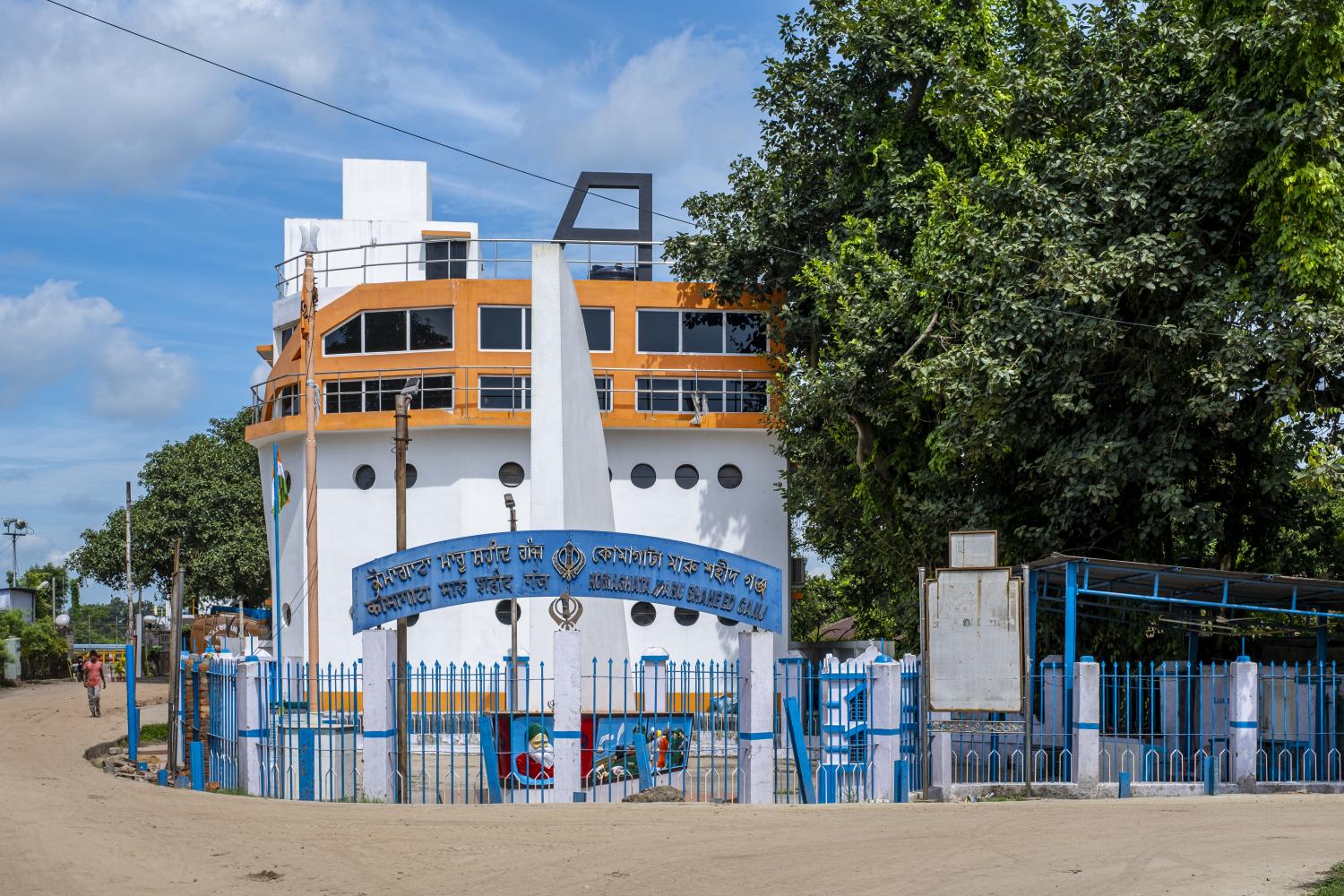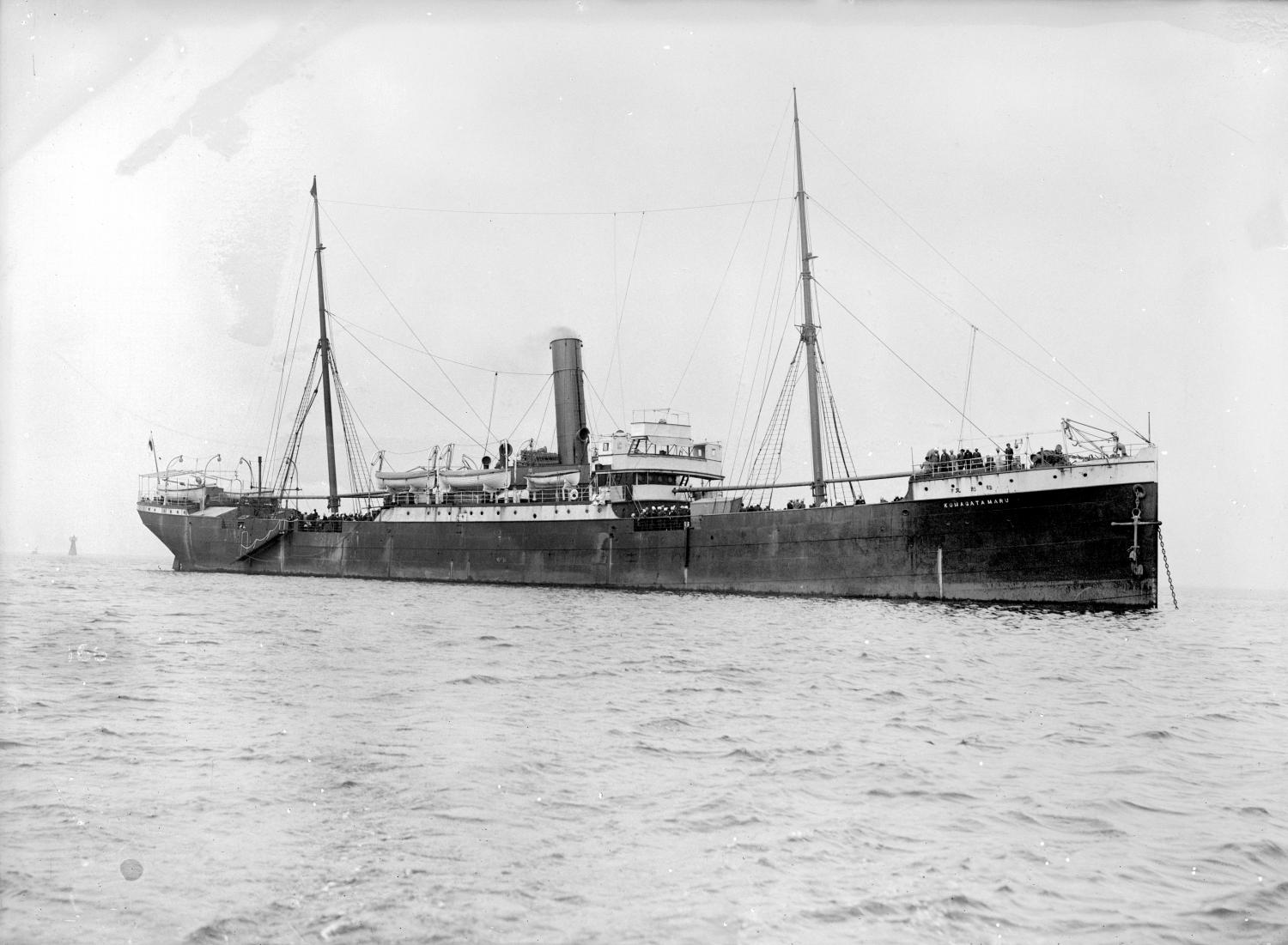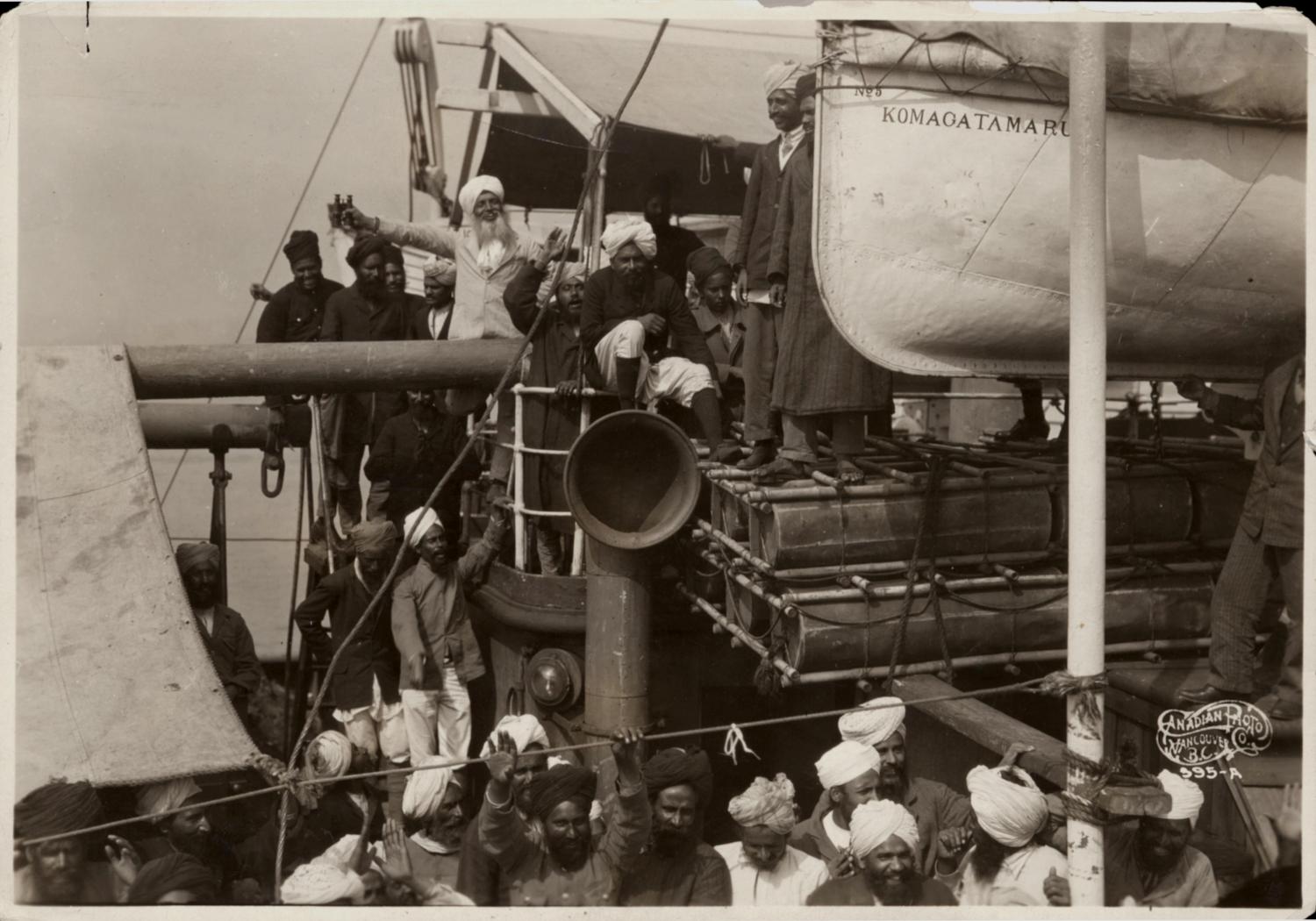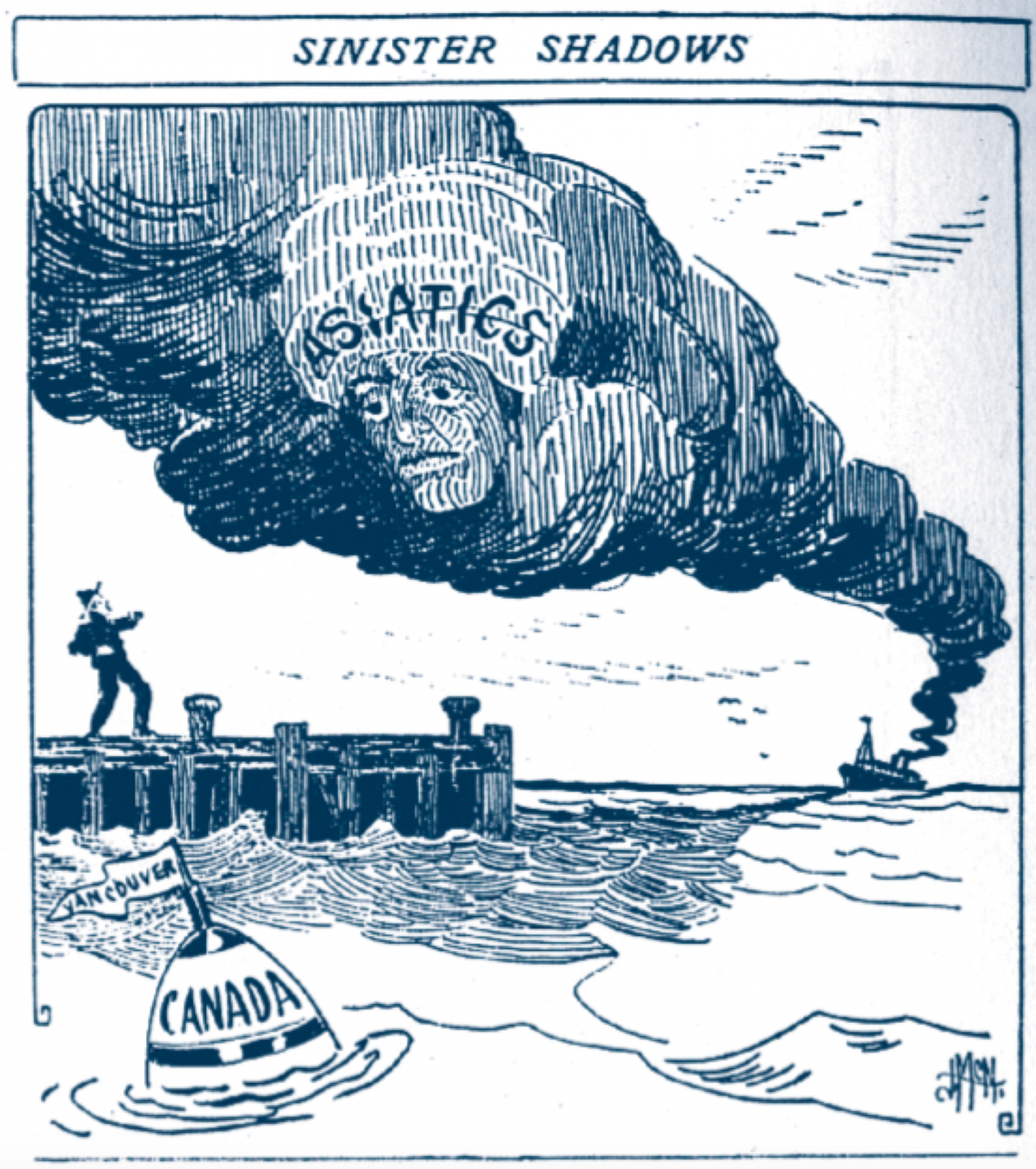Komagata Maru
A transpacific voyage turns into a dramatic standoff over a discriminatory immigration law
Date: 1914
In 1914, a two-month standoff took place in Vancouver's Burrard Inlet. On one side were Canadian immigration officials; on the other, a crowded Japanese steamship named the Komagata Maru. Chartered by entrepreneur Gurdit Singh, the boat's 376 Sikh, Hindu, and Muslim passengers of Indian origin were hoping to immigrate to Canada — but upon arrival they found they weren't even allowed to disembark.
This was due to a six-year-old law. In 1908, Ottawa enacted the "continuous journey" rule, which stated that passengers coming to Canada from their country of origin had to make the voyage without stopping. By design, this halted South Asian immigration because there were no non-stop sailings offered between India and Canada. The Komagata Maru had set sail from Hong Kong; thus, its Indian passengers were not allowed into Vancouver.
The ship's flouting of discriminatory immigration law proved an international spectacle. Press coverage often demonized the passengers. The Vancouver Sun called them "Hindu invaders."
In July 1914, despite protests by the local South Asian community and their attempts to raise money for the would-be immigrants, the Canadian navy escorted the ship out of the inlet. The Komagata Maru made its way to Calcutta, India, where police were waiting to arrest those who had caused the "political agitation." When police boarded the ship, a riot broke out, and officers opened fire, killing 19. Although some escaped, most passengers were detained and held in a Calcutta prison while the Indian government investigated what had transpired. The passengers were ultimately condemned as violent revolutionaries by the country's politicians and press, a false reputation that would haunt them for decades.
The "continuous journey" law was in place until 1947, one of several reforms that marked a new era of Canadian immigration policy following the Second World War. By then, what befell the Komagata Maru and its passengers had largely been forgotten — except by the South Asian community. In 2008, as the centenary of the tragedy approached, Canadian Sikhs began pushing for an official apology from the Canadian government, one they would finally receive in May 2016. "No words can fully erase the pain and suffering [Komagata Maru's passengers] experienced,” Prime Minister Justin Trudeau said. "Regrettably, the passage of time means that none are alive to hear our apology today. Still, we offer it, fully and sincerely. For our indifference to your plight. For our failure to recognize all that you had to offer. For the laws that discriminated against you, so senselessly. And for not formally apologizing sooner. For all these things, we are truly sorry."
Sources:
- "Events in Asian Canadian History." Government of Canada, 30 Apr. 2021, https://www.canada.ca/en/canadian-heritage/campaigns/asian-heritage-month/important-events.html.
- Jagpal, Sarjeet. Becoming Canadians. Harbour Publishing, 1994.
- Johnston, Hugh. "Komagata Maru." The Canadian Encyclopedia, 7 Feb. 2006, https://www.thecanadianencyclopedia.ca/en/article/komagata-maru.
- Kazimi, Ali. Undesirables. Douglas & McIntyre, 2012.
- Trudeau, Justin. "Komagata Maru Apology in the House of Commons." Prime Minister of Canada, 18 May 2016, https://pm.gc.ca/en/news/speeches/2016/05/18/komagata-maru-apology-house-commons.
- "The ‘Incident.’" Komagata Maru Journey, Mar. 2012, http://komagatamarujourney.ca/incident.
- Verma, Archana. The Making of Little Punjab in Canada. SAGE Publications, 2002.







